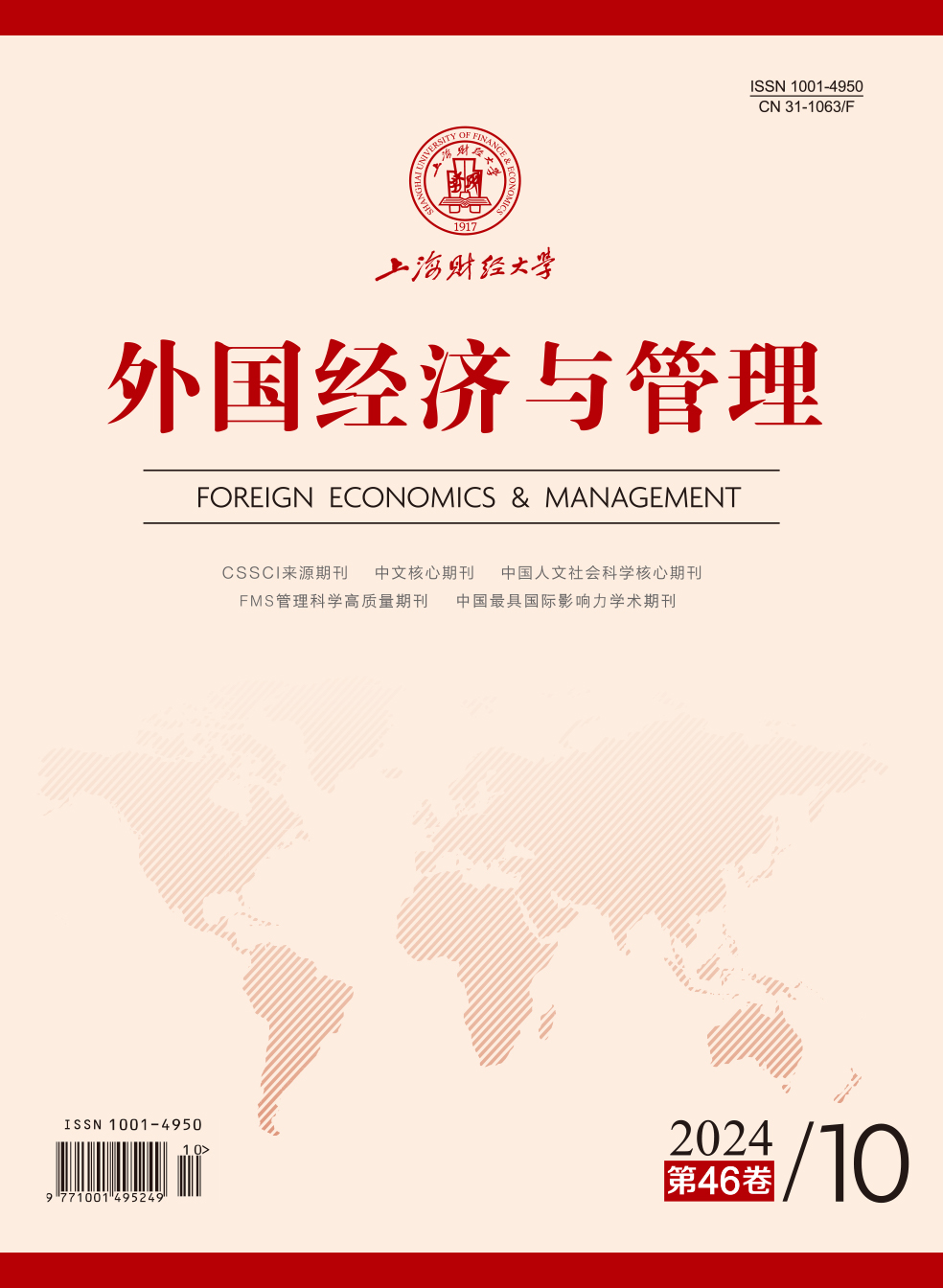员工AI合作在驱动员工创新上具有重要潜力。与以往对于员工正式创新的关注不同,本文探讨了员工—AI合作对越轨创新的影响,并从资源保存理论视角揭示了其中的作用机制。通过对三阶段291份数据进行分析发现:(1)员工—AI合作增加了对员工的信息搜寻支持和创意探索支持。(2)信息搜寻支持和创意探索支持传导了员工—AI合作对越轨创新的影响。员工—AI合作通过信息搜寻支持和创意探索支持,改善了员工越轨创新资源匮乏的局面,进而激励员工开展越轨创新。(3)AI使用熟练度强化了员工—AI合作对信息搜寻支持和创意探索支持的影响,以及员工—AI合作通过信息搜寻支持和创意探索支持对越轨创新的间接影响。这说明员工—AI合作的影响效果具有倾向性,在与AI合作的过程中,熟练使用AI的员工更具有获取资源的优势,也更倾向于做出越轨创新。研究结论丰富了员工—AI合作的影响效应和作用机制研究,同时也为企业构建有效的员工—AI交互系统、引导员工合理开展越轨创新提供了理论思路。
员工—AI合作与越轨创新:一个被调节的双路径模型
摘要
参考文献
5 刘伟鹏, 贾建锋, 杨付. 越轨创新: 研究评述与展望[J]. 外国经济与管理, 2024, 46(4): 102-118.
7 吕荣杰, 冯昱玮, 张义明, 等. 员工越轨创新研究述评与展望[J]. 科技进步与对策, 2022, 39(23): 151-160. DOI:10.6049/kjjbydc.2022020491
11 尹萌, 牛雄鹰. 与AI“共舞”: 系统化视角下的AI-员工协作[J]. 心理科学进展, 2024, 32(1): 162-176.
12 张恒, 高中华, 李慧玲. 增益还是损耗: 人工智能技术应用对员工创新行为的“双刃剑”效应[J]. 科技进步与对策, 2023, 40(18): 1-11.
13 张志学, 华中生, 谢小云. 数智时代人机协同的研究现状与未来方向[J]. 管理工程学报, 2024, 38(1): 1-13.
14 赵斌, 古睿, 李瑶. 员工越轨创新成功的情境化研究[J]. 科学学研究, 2019, 37(11): 2102-2112.
15 朱晓妹, 王森, 何勤. 人工智能嵌入视域下岗位技能要求对员工工作旺盛感的影响研究[J]. 外国经济与管理, 2021, 43(11): 15-25.
16 Agarwal P, Farndale E. High-performance work systems and creativity implementation: The role of psychological capital and psychological safety[J]. Human Resource Management Journal, 2017, 27(3): 440-458. DOI:10.1111/1748-8583.12148
17 Augsdorfer P. Bootlegging and path dependency[J]. Research Policy, 2005, 34(1): 1-11. DOI:10.1016/j.respol.2004.09.010
18 Bankins S, Ocampo A C, Marrone M, et al. A multilevel review of artificial intelligence in organizations: Implications for organizational behavior research and practice[J]. Journal of Organizational Behavior, 2024, 45(2): 159-182. DOI:10.1002/job.2735
19 Budhwar P, Chowdhury S, Wood G, et al. Human resource management in the age of generative artificial intelligence: Perspectives and research directions on ChatGPT[J]. Human Resource Management Journal, 2023, 33(3): 606-659. DOI:10.1111/1748-8583.12524
20 Cao L M, Chen C, Dong X W, et al. The dark side of AI identity: Investigating when and why AI identity entitles unethical behavior[J]. Computers in Human Behavior, 2023, 143: 107669. DOI:10.1016/j.chb.2023.107669
21 Charlwood A, Guenole N. Can HR adapt to the paradoxes of artificial intelligence?[J]. Human Resource Management Journal, 2022, 32(4): 729-742. DOI:10.1111/1748-8583.12433
22 Chowdhury S, Budhwar P, Dey P K, et al. AI-employee collaboration and business performance: Integrating knowledge-based view, socio-technical systems and organisational socialisation framework[J]. Journal of Business Research, 2022, 144: 31-49. DOI:10.1016/j.jbusres.2022.01.069
23 Chowdhury S, Dey P, Joel-Edgar S, et al. Unlocking the value of artificial intelligence in human resource management through AI capability framework[J]. Human Resource Management Review, 2023, 33(1): 100899. DOI:10.1016/j.hrmr.2022.100899
24 Glikson E, Woolley A W. Human trust in artificial intelligence: Review of empirical research[J]. Academy of Management Annals, 2020, 14(2): 627-660. DOI:10.5465/annals.2018.0057
25 Hampel K, Kunze F. The older, the less digitally fluent? The role of age stereotypes and supervisor support[J]. Work, Aging and Retirement, 2023, 9(4): 393-398. DOI:10.1093/workar/waad001
26 Jia N, Luo X M, Fang Z, et al. When and how artificial intelligence augments employee creativity[J]. Academy of Management Journal, 2024, 67(1): 5-32. DOI:10.5465/amj.2022.0426
27 Keating D J, Cullen-Lester K L, Meuser J D. Virtual work conditions impact negative work behaviors via ambiguity, anonymity, and (un) accountability: An integrative review[J]. Journal of Applied Psychology, 2024, 109(2): 169-201. DOI:10.1037/apl0001126
28 Kemp A. Competitive advantage through artificial intelligence: Toward a theory of situated AI[J]. Academy of Management Review, 2024, 49(3): 618-635. DOI:10.5465/amr.2020.0205
29 Khoa D T, Gip H Q, Guchait P, et al. Competition or collaboration for human–robot relationship: A critical reflection on future cobotics in hospitality[J]. International Journal of Contemporary Hospitality Management, 2023, 35(6): 2202-2215. DOI:10.1108/IJCHM-04-2022-0434
30 Kong H Y, Yin Z H, Baruch Y, et al. The impact of trust in AI on career sustainability: The role of employee–AI collaboration and protean career orientation[J]. Journal of Vocational Behavior, 2023, 146: 103928. DOI:10.1016/j.jvb.2023.103928
31 Man Tang P, Koopman J, McClean S T, et al. When conscientious employees meet intelligent machines: An integrative approach inspired by complementarity theory and role theory[J]. Academy of Management Journal, 2022, 65(3): 1019-1054. DOI:10.5465/amj.2020.1516
32 Petzsche V, Rabl T, Franzke S, et al. Perceived gain or loss? How digital affordances influence employee corporate entrepreneurship participation likelihood[J]. European Management Review, 2023, 20(2): 188-209. DOI:10.1111/emre.12530
33 Qu J Z, Khapova S N, Xu S Y, et al. Does leader humility foster employee bootlegging? Examining the mediating role of relational energy and the moderating role of work unit structure[J]. Journal of Business and Psychology, 2023, 38(6): 1287-1305. DOI:10.1007/s10869-023-09884-w
34 Quade M J, Perry S J, Hunter E M. Boundary conditions of ethical leadership: Exploring supervisor-induced and job hindrance stress as potential inhibitors[J]. Journal of Business Ethics, 2019, 158(4): 1165-1184. DOI:10.1007/s10551-017-3771-4
35 Raisch S, Krakowski S. Artificial intelligence and management: The automation–augmentation paradox[J]. Academy of Management Review, 2021, 46(1): 192-210. DOI:10.5465/amr.2018.0072
36 Vrontis D, Christofi M, Pereira V, et al. Artificial intelligence, robotics, advanced technologies and human resource management: A systematic review[J]. The International Journal of Human Resource Management, 2022, 33(6): 1237-1266. DOI:10.1080/09585192.2020.1871398
37 Yam K C, Tang P M, Jackson J C, et al. The rise of robots increases job insecurity and maladaptive workplace behaviors: Multimethod evidence[J]. Journal of Applied Psychology, 2023, 108(5): 850-870. DOI:10.1037/apl0001045
38 Yin M, Jiang S Y, Niu X Y. Can AI really help? The double-edged sword effect of AI assistant on employees’ innovation behavior[J]. Computers in Human Behavior, 2024, 150: 107987. DOI:10.1016/j.chb.2023.107987
引用本文
韩明燕, 赵静幽, 李志. 员工—AI合作与越轨创新:一个被调节的双路径模型[J]. 外国经济与管理, 2024, 46(10): 89-104.
导出参考文献,格式为:





 4867
4867  6129
6129

